Why All Great Leaders Value Strategic Leadership?
Strategic Leadership is an acquired skill. It does not come naturally. Therefore, educating yourself about its various aspects will help you become a better leader.
Well-implemented strategic decisions and strategic leadership are essential assets to an organization. It helps with long-term success.
Is your company successful but not quite at the next level? If this is the case, your company has a critical need for strategic leadership.
You must have heard that you need to be more strategic if you want to move up into a senior leadership role in your organization.
Thus, if you want to improve your decision-making skills and become an effective strategic leader, this article is for you.
It will show you the basics of being a great strategic leader. Meanwhile, towards the end of this article, I'll share my favorite books on strategic leadership. So, gear up, and let's get started.
- Chapter 1: Strategic Leadership in an Organization
- What is Strategic Leadership?
- Importance of Strategic Leadership
- Role of Strategic Leader
- 25 Charecteristics/ Qualities/ Traits/ Skills of an Effective Leader
- 6 Components of Strategic Leadership
- Guiding Principals of Strategic Leadership Skill
- Who are the Strategic Leaders?
- Difference between Leadership and Strategic Leadership
- How do you Develop Strategic Thinking?
- Chapter 2: Strategic Decision Making in an Organization
- Chapter 3: Real Life Examples of Strategic Leaders
Chapter 1: Strategic Leadership in an Organization

What is Strategic Leadership?
Strategic leadership is the core ability to articulate a company's strategic vision and motivate people to pursue that goal.
Before you are a leader, success is all about growing yourself. When you become a leader, success is all about growing others. - Jack Welch.
According to Hoskisson et al. (2004), Strategic Leadership is:
“The managerial ability to anticipate, envision, maintain flexibility, and empower others to create strategic change as necessary”.
Strategic leaders hold the power of influencing people to look at the bigger picture and work towards long-term goals. It gives companies the much-needed advantage over competitors.
Exercising a strategic leadership style creates flexibility. It also creates competitive advantages through:
-
Development of dynamic core competencies. Dynamic core competencies are core abilities to achieve a certain level of performance. It helps in the development of business models. Core competencies give companies a guarantee of success in times of fast change.
-
Focus and development of human capital.
-
To use new manufacturing and informational technologies.
-
Using out of the box ideas and strategies.
-
Help to install new organizational structures and practices.
Importance of Strategic Leadership
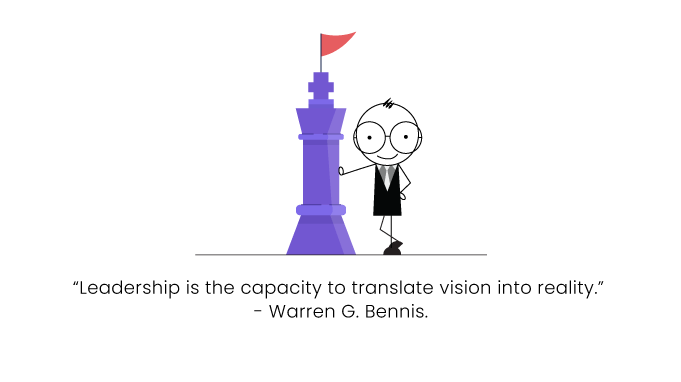
-
Strategic leaders think ahead. They prepare for succession over competitors.
-
These leaders help in implementing strategies.
-
Strategic leadership helps streamline processes, boost strategic productivity and promote innovation.
-
Under this leadership, employees can be productive, independent, and push new ideas.
-
Reward and incentive programs are integral to strategic leaders.
-
They encourage employees and help them reach their strategic goals.
-
Strategic leaders help integrate vision, creativity, and innovation necessary for long-term success.
-
A Strategic Leader can connect with people around them through solid communication skills.
-
These leaders can drive strong performance expectations.

Role of a Strategic Leader
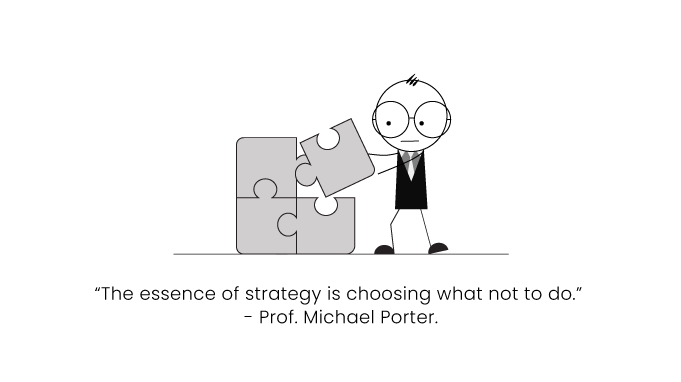
Strategic leaders use their expertise to design new growth strategies. These leaders need a high level of commitment and work involvement.
The various roles of a strategic leader in an organization includes-
1. Decision Making: Effective leaders are great at making decisions through calculated risks. They can see the intricacies of a situation and find the best possible solution for it. They can adopt marketplace changes and take advantage of new opportunities.
2. People skills: They are great at managing people. They can converse effectively, which makes things more clear and also motivates others.
3. Driving force: These leaders have a driving personality. They can motivate others, keep them on task, and pay attention to the end goal.
4. Goal setting: A strategic leader surveys the current trends, looking for growth opportunities. Once they spot where the company needs to go, they set goals to position the company to achieve that growth.
5. Exploiting and maintaining core competencies: The resources and capabilities build competitive advantage. These are the core competencies of an organization. The senior management ensures these competencies are a part of its competitive strategy. They also ensure that it is being maintained, invested in, and developed over time.
6. Developing human capital: Employees are a capital resource that requires investment. People are the only sustainable source of competitive advantage. Hence, support is necessary from leaders to ensure employees are adequately trained.
7. Sustaining an influential organizational culture: Organizational or company culture is a part of competitive advantage. It helps to develop and execute strategies in an organization. Corporate culture regulates employees’ actions and attitudes.
8. Emphasizing ethical practices: Strong moral foundations improve the effectiveness of strategies. In the absence of an ethical culture, staff and management may act opportunistically. They might take advantage of their positions to benefit themselves. Hence, it is a leader's responsibility to set an example by making decisions ethically.
9. Establishing balanced organizational control: Organizational controls ease corrective adjustments while implementing strategies. Rules help to determine when and what adjustments to make.
10. Determining strategic direction: Organization’s top management teams develop clear visions. They ensure organizational success. They need to “paint a picture” of where the organization will be in 5-10 years. The vision works as a target to motivate employees.
25 Characteristics/ Qualities/ Traits/ skills of an effective strategic leader
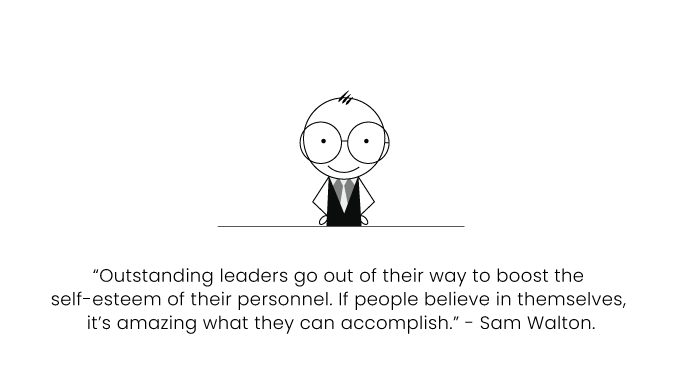
1. Reliable: Strategic leaders are trustworthy. They strategically think about everything before acting upon it. Hence, eliminating chances of risk.
2. Consistent: Consistency is the key to success. Strategic leaders understand the importance of being consistent. They influence others to do the same.
3. Self-awareness: They understand how their mood and actions can affect those around them. Hence, they are self-aware.
4. Self-control: These leaders have incredible control over themselves. They can control their emotions and moods, which might affect people around them.
5. Social skills: Strategic leadership qualities include excellent social skills. These skills enable these leaders to bond with their team more effectively.
6. Motivational: It is not about power and money for these leaders. They invest in the success of their teams and organization.
7. Compassionate: Emotional intelligence is most important when it comes to influential leaders. Hence, strategic leaders are always understanding and empathetic.
8. Broad perspective: Strategic leaders do not fixate on one way of thinking. They plan things by considering every possible angle.
9. Wise use of power: These leaders don’t force power on their team. They use power wisely to get the most out of their teams.
10. Upskilling: These leaders are always up to date with the latest news. They develop themselves to match the current trends.
11. Loyal and honest: Strategic leaders are reliable, loyal, and honest.
12. Open-minded: They have problem-solving skills and are open to new ideas. They approach each problem from various views and perspectives.
13. Fair: Strategic leaders don’t force power to get to an agreement. They instead use their power judiciously and wisely.
14. Strategic Thinkers: Strategic leaders think before acting or speaking.
15. Delegates: They know how to delegate tasks so that no team member feels overloaded. It also helps to assign challenging tasks that motivate them.
16. Strong Communicators: Without a doubt, all influential strategic leaders are great communicators. Having a solid vision won’t help if it is not clearly conveyed to the team.
17. Good listening skills: Great leaders have the ability to put forward their points clearly. These are essential characteristics of great leaders.
18. Positive attitude: Positive environment makes employees happy and cheerful. Employees work harder, thus boosting productivity.
19. Innovative: These leaders are open to change and innovation. Innovation lets organizations achieve a competitive advantage.
20. Collaborative: This leadership requires a collaborative approach that creates transparency. Collaboration builds trust and support among team members.
21. Diplomatic: Diplomatic approach helps strategic leaders manage conflicts using negotiations and sensitivity.
22. Empathetic: Empathy fosters a strong bond between a leader and the team. A leader must grasp an employee's point of view by putting themselves in their shoes.
23. Humility: Humble leaders admit mistakes and apologize for them. Employees benefit from a more human and relatable workplace when their leader is genuine.
24. Passionate: Enthusiastic approach gets employees excited to achieve better.
25. Committed: Commitment helps to stay focused, which enables these leaders to achieve success.
6 components of strategic leadership
According to Ireland & Hitt’s, there are six components to leadership strategy:
-
Determining the vision and purpose is essential. Any good leader should know if the organizational goal is worth pursuing. These leaders ensure that an organization's purpose is met.
-
These leaders utilize all the organization’s core competencies. The competencies include a bundle of human intellectual, financial, and social capital.
These components, while rare, can create a competitive advantage. Influential strategic leaders can determine which core elements are essential for organizational purposes. -
A sustainable organizational culture is essential. It helps to reinforce the values and purpose of the organization.
-
Emphasis on ethical practices ensures positive organizational culture. People look up to leaders. Hence, they need to be ethical, ensuring others follow the same.
-
The development of human capital is vital. It includes people’s technical, social, political, and leadership skills. It helps to maintain the core competencies of the organization.
-
A well-balanced organizational control is required. It is the most difficult of the above points. How much power do you want to assert? It is a question that every good strategic leader should be ready to face.
Guiding principles of strategic leadership Skill
Strategic leadership principles work as the baseline for leaders. It encourages leaders to aim towards company success and identify the scope of growth.
The principles can be grouped into three segments. Each group has a specific set of principles.
Group 1: Systems and Structures- It involves approaches to decision-making, innovation, and transparency.
- Distribute responsibility.
- Make information open and accessible.
- Promote innovative thinking and focus on the big picture.
- Create many paths to test ideas before execution.
Group 2: People, Policies, and Practices- It involves unconventional ways of thinking about hiring, training, and assessments.
- Make it safe to fail.
- Provide access to other strategies.
- Develop opportunities for experience-based learning.
- Hire for transformation.
Group 3: Self Improvement- It involves the development of the potential strategic leader themselves.
- Bring your whole self to work.
- Find time for self-reflection.
- Believe leadership development to be an ongoing process.
Who are the strategic leaders?
1. CEO’s
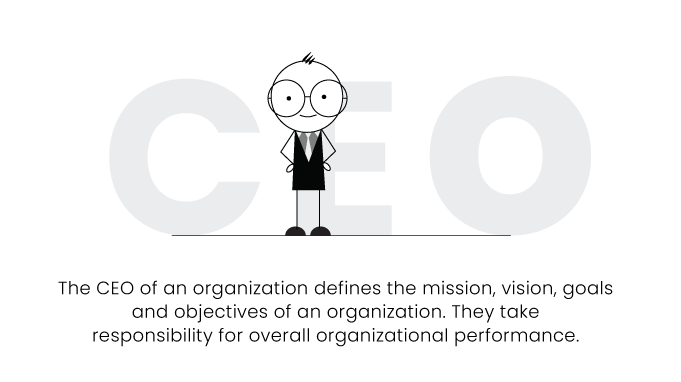
The CEO of an organization defines the mission, vision, goals and objectives of an organization. They take responsibility for overall organizational structure and performance.
The CEO transmits the vision to the Top Management Teams of the organization. All Strategic Decisions that are made support this vision.
According to Mintzberg’s 10 Managerial Role, the roles and responsibilities of a CEO are categorized into three conceptions.
- Interpersonal
- Informational
- Decisional
The CEO is the bonding link between the internal activities and the external environment of an organization.
2. Top Management teams (TMT)

The CEO, along with a small group of executives at the upper level in an organization, comprises the TMT. They plan, install and test various stages of the whole decision-making process.
The roles and responsibilities of a TMT are conceptualized into three elements.
-
Composition- These include values, personalities and demographic characteristics.
-
Structure- It comprises responsibilities, interdependencies, and power dynamics.
-
Process- Processes include social interaction that exists between TMT members. For example, Conflict and information exchanges.
3. Board of Directors
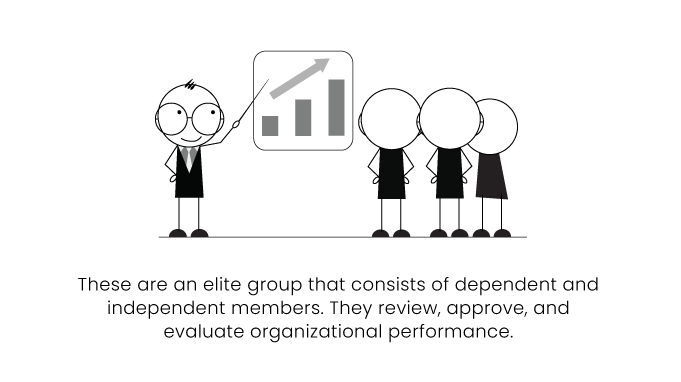
The Board of Directors are an elite group that consists of dependent and independent members. They review, approve, and evaluate organizational performance.
Like TMT, They also have three conceptual elements.
- Composition,
- Structure, and
- Process.
The composition is the same as TMT. The structure includes the size of the board, duality, and board committees.
The process includes the teams, corporations, information exchange, and conflicts.
Difference between leadership and strategic leadership
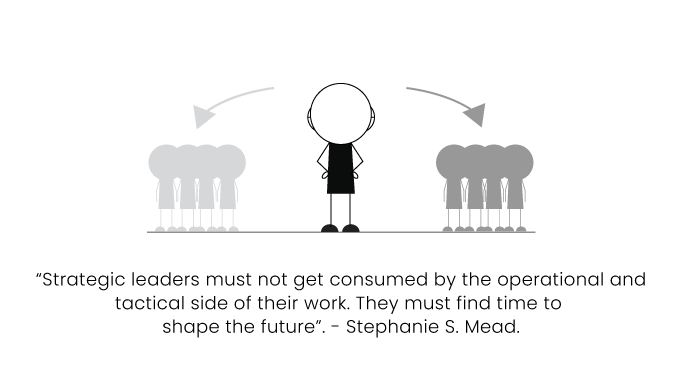
| Leadership | Strategic Leadership |
|---|---|
| Ordinary leadership looks at the present and understands how to navigate the day-to-day needs of an organization. | A strategic leader considers the future in order to create new opportunities, products, or services. |
| These leaders are less instrumental in business success. | These leaders develop clear and well-thought-out plans for workers to follow. | Involves themselves in several projects. | Spends time to prepare people for success for the long-term rather than short-term. |
| Usually works many hours on any given day or week. | Believes in work-life balance. |
| They work hard. | They work differently. |
| Focuses more on systems, processes and status quo. | Focuses more on vision and the company’s strategic intent. |
| Holds a planning session once or twice a week. | Planning is an ongoing part of strategic leaders. |
| Sense of accomplishment is towards the external environment. | Frequently reflects on their leadership impact and influence. Strategic leaders believe in life-long learning. Self-understanding is a part, and the focus is more inward. |
| Engages in weekly status meetings. | Engages in weekly adjustment meetings. |
| Asks: How is this making us more efficient? | Asks: How is this making us more effective? |
How do you develop strategic thinking?
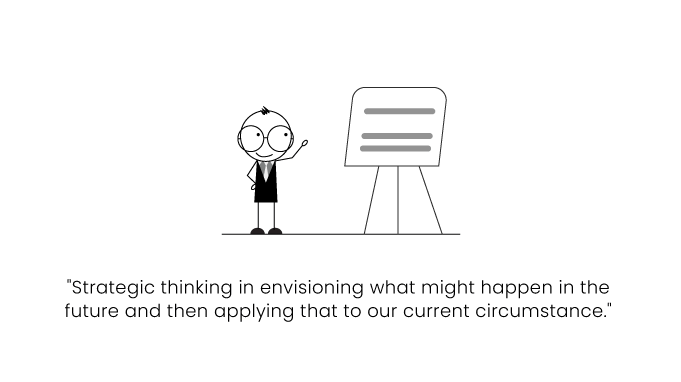
Every business wants strategic thinkers. It is not just for senior executives but for all leadership levels of an organization.
Adopting a strategic mindset will help you increase profit, delight customers, and retain talent. It helps answer “what,” “how,” “why,” and “when.” In short, it increases your odds of success.
The ability to think strategically is vital in deciding who is a leader and who is a follower. The Harvard Business Review describes strategic thinking as “Strategic people create connections between ideas, plans, and people that others fail to see.”
If you are looking to develop your strategic thinking skills, Here are nine ways you can do that:
1. Embrace the future: It is vital to understand trends, context, and business drivers. Make decisions that support future goals and are beneficial in the long run.
2. Understand trends through observation: Do a routine exercise in your day-to-day work. In this exercise, explore and synthesize the internal trends of your organization. Connect with industry peers and leaders to understand the marketplace.
3. Broaden perspective through tough questions: Always ask yourself questions from different angles. Ask about how each outcome would support the organization’s broader goals.
4. Add structure to your written and verbal communication: Adding structure is essential. Systems are possibly achieved through prioritizing and sequencing of thoughts. It helps to focus on the core message.
5. Embrace debate and invite challenges: With the help of diverse peers, you can challenge your own thinking. Remember not to get personal. Try to focus on issues and not people. It will enable you to develop better long-term decision-making skills as well as empathy.
6. Improve listening skills: It is crucial for you to accept that every decision has flaws. Hence, to overcome them, take opinions from your co-workers and employees. It will help build perspectives that will teach you new ways of doing things.
7. Understand consequences: Every decision you make will have consequences. Hence, it is vital that you objectively analyze all the risks involved. Consider all pros and cons, listen to peers, and understand the impact.
It will help you make an informed decision. Always make a decision that efficiently delivers the organizational goal.
8. Change approach according to situations: Keep learning through various problems. Strategic decisions should be adaptive in nature. The process of thinking should change according to the scenario.
Adopt and adapt along the way to strengthen your strategic thinking skills. Work on ideas and projects that will benefit the company the most.
9. Make logical and unbiased decisions: Biases sometimes can be involuntary. It is crucial that you keep asking yourself whether your decisions were rational in the past. Admit your flaws and start working on them.
Check out Rick Horwarth's keynote speech on strategic thinking. He is The New York Times, Wall Street Journal and USA Today bestselling author on Strategy. He is also the CEO of Strategic Thinking Institute.
Chapter 2: Strategic Decision Making in an organization

What is Strategic Decision Making?
Identifying alternative solutions for different challenges is what strategic decision-making is all about. It is about determining significance, priority, and preferred strategic responses.
Strategic decisions involve ethical clarity and a high degree of uncertainty.
Strategic decision-making is influenced by the following factors -
-
The Demographic, Cognitive and Personal characteristics of Top management.
-
Nature of strategic decision.
-
Decision process characteristics.
-
Internal and external environmental characteristics of an organization.
Strategic Decision making process - Step by Step
Many models help strategic leaders make better decisions through strategic planning. In most organizations, the decision-making team involves all the senior leaders. These decision makers are involved with Strategic issue diagnosis.
Strategic issue diagnosis helps to define and prioritize threats and opportunities. It diagnoses the internal and external environment. Strategic issue diagnosis also helps to formulate a Strategic Position Statement or SPS.
According to Pitt and Koufopoulos, SPS helps define the key issues that presently exist and those that may arise in an organization’s future.
Nine steps produce the SPS.
STEP 1: Scanning the external environment for raw issues.
STEP 2: Scanning the internal environment for raw issues.
STEP 3: Merging information for external stakeholders.
STEP 4: Merging information for internal stakeholders.
STEP 5: Strategic external issue diagnosis.
STEP 6: Strategic internal issue diagnosis.
STEP 7: Determination of critical threats and opportunities.
STEP 8: Determination of critical strengths and weaknesses.
STEP 9: Combining a Strategic Position Statement
After the SPS formation, the Strategic formulation phase takes place. Managers are involved in issue diagnosis, generation, and evaluation of alternatives. They make the final strategic choices.
The strategic leaders then implement the final strategic choice.
Our goals can only be reached through the vehicle of a plan. There is no other route to success. - Pablo Picasso.
Common types/ examples of Strategic Decisions
1. Mergers:
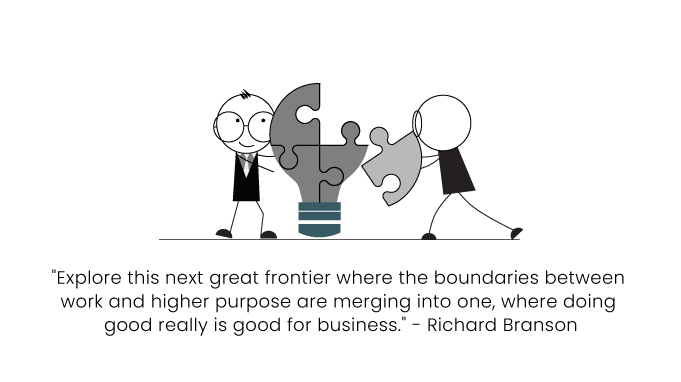
A merger is an external business growth strategy that occurs in two ways-
-
Takeover or acquisition- Here, the company buys a majority stake in the other company. This stake results in more control over the market.
-
Amalgamation - Two or more companies join forces to form a single entity.
Businesses merge to achieve economies of scale and access scarce resources. They also merge to enter new lines of business.
2. Market investment:
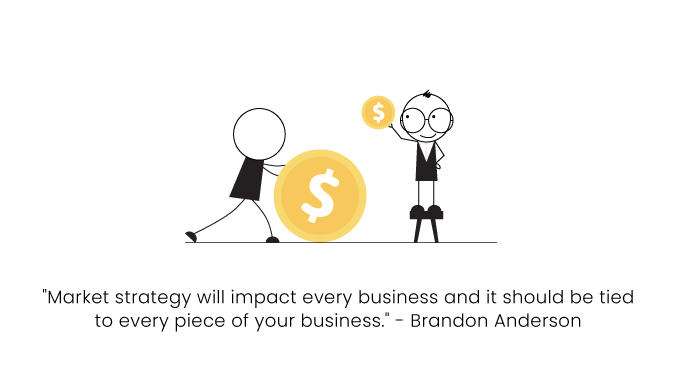
Companies use several strategies to expand their market share. Few examples of market investment strategy include-
-
Market penetration strategy- This strategy is used by companies to improve product quality. It is even used to lower prices to sell more in their existing markets.
-
Product development strategy- Companies develop new products to sell in their existing markets.
-
Riskier strategy- Companies try to develop new products to sell in new markets.
3. Business growth strategies:
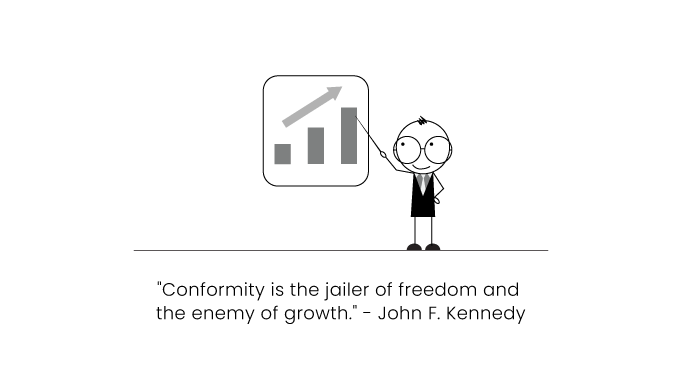
They are of two types-
-
Internal strategy- These strategies are organic in nature. They rely on the company’s resources for reinvestment. Internal strategies are generally well-planned and slow.
-
External strategy- To leverage resources, companies rely on this strategy. It uses other company’s resources to leverage.
4. Expansions:
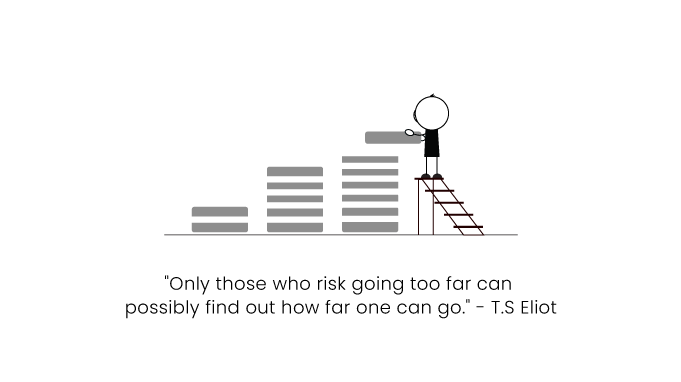
Organizations, when they attempt to achieve high growth, adopt this strategy.
Expansion strategies are adopted through five ways -
-
Concentration
-
Integration
-
Diversification
-
Cooperation
-
Internationalization
5. Joint venture:
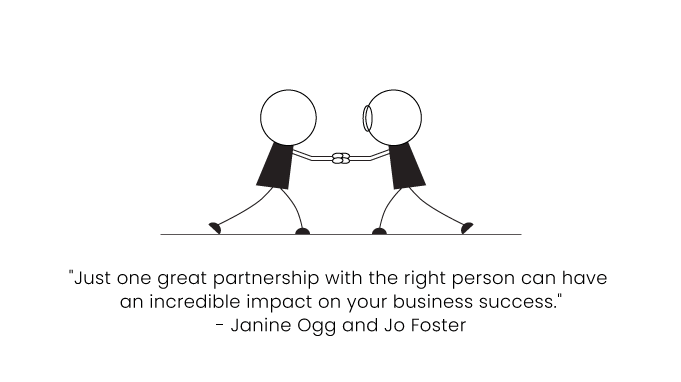
Joint ventures is a business growth strategy. Here two or more companies together establish a new business enterprise. It allows companies to exploit business opportunities. It will enable small businesses to secure resources and share the risk of entering a new market.
Characteristics of strategic decisions
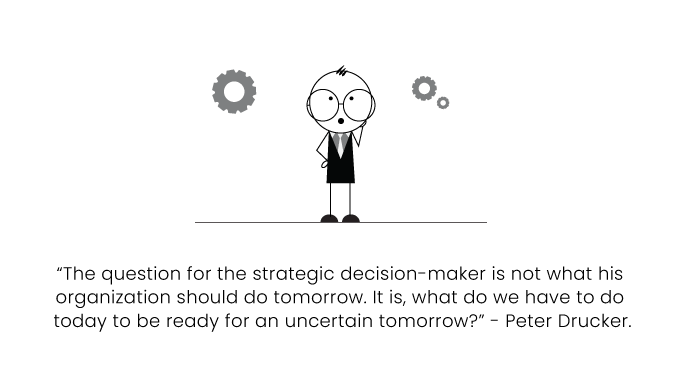
-
Strategic decisions deal with harmonizing organizational resource capabilities with threats and opportunities.
-
These decisions are complex in nature.
-
Strategic decisions happen at the topmost level. These decisions are uncertain as they deal with the future and involve strategic risks. For example, Technological changes, Merger integration, Competitive pressure, Consumer demands shifts etc.
-
They are the bridge between deliberate and emergent strategies. Deliberate strategy emphasizes on achieving an intended business objective. Emergent strategy, on the other hand, is a process of identifying unforeseen outcomes from strategy execution.
-
They play an essential role in the development of individual managers.
-
Strategic decisions are the basis for formulating and making operating decisions.
-
Strategies are formulated to achieve the company’s mission and objectives. It determines the company’s long-term direction.
-
Strategic decisions focus on achieving a sustainable competitive edge for the firm.
-
These strategies are uncertain and involve significant changes.
-
They need irreversible commitments and hence risk some sunk cost investments.
Top 5 best strategic leadership books
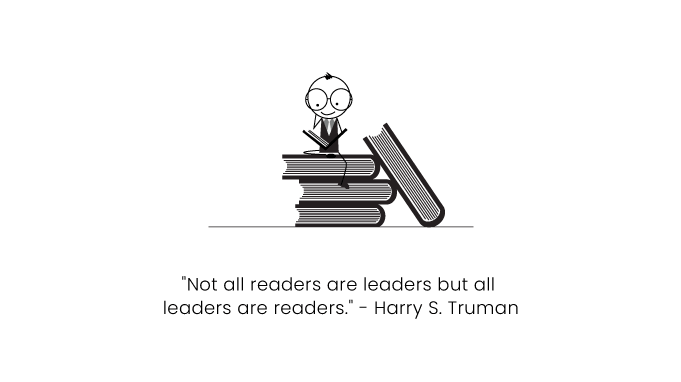
Read below the list of Strategic leadership books that we at Vantage Circle absolutely love -
-
The Art of Strategic Leadership: How Leaders at All Levels Prepare Themselves, Their Teams, and Organizations for the Future- Book by Stephanie S. Mead and Steven J. Stowell.
-
Becoming a Strategic Leader: Your Role in Your Organization’s Enduring Success - Book by Richard L. Hughes, Katherine Colarelli Beatty, and David L. Dinwoodie.
-
Strategic Leadership: How to Think and Plan Strategically and Provide Direction - Book by John Adair.
-
Effective Strategic Leadership: An Essential Path to Success Guided by the World’s Greatest Leaders- Book by John Adair.
-
Strategic Leadership: Top Executives and Their Effects on Organizations - Book by Donald C. Hambrick and Sydney Finkelstein.
Chapter 3: Real Life Examples of Strategic Leaders
1. Elon Musk:
Elon Musk was born on June 28, 1971, in Pretoria, South Africa. He is a South African-born American entrepreneur who co-founded the electronic payment firm, PayPal. He also formed SpaceX, an aerospace manufacturer. He is one of the first significant investors and chief executive officer of the electric car manufacturer Tesla.
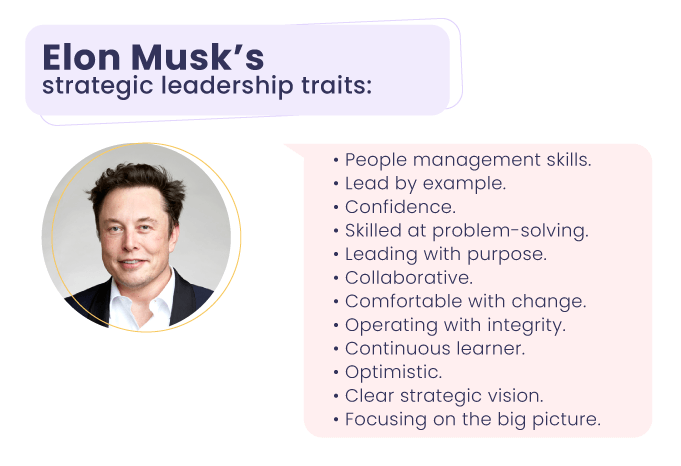
2. Steve Jobs:
Steve Jobs, in full Steven Paul Jobs was born on February 24, 1955, in San Francisco, California. He died on October 5, 2011, in Palo Alto, California. He was the co-founder of Apple Computer, Inc now known as Apple Inc. He was a charismatic pioneer of the personal computer era.
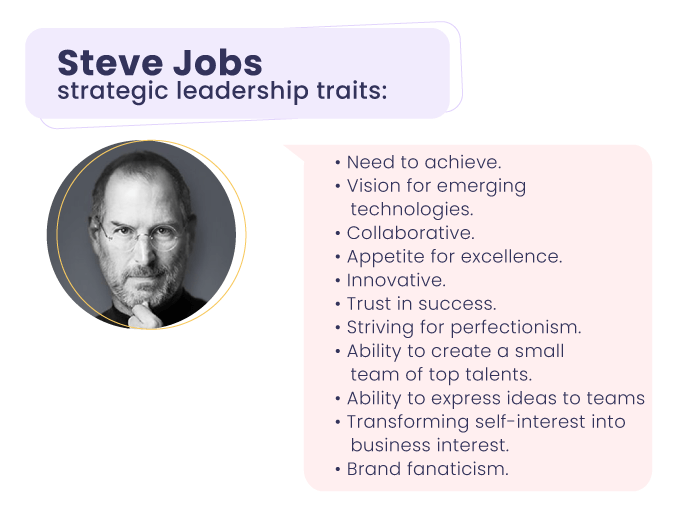
3. Mark Zuckerberg:
Mark Zuckerberg, in full Mark Elliot Zuckerberg was born on May 14, 1984, in White Plains, New York. He is an American computer programmer who co-founded Facebook, a social networking Website. He is also the CEO of Facebook.
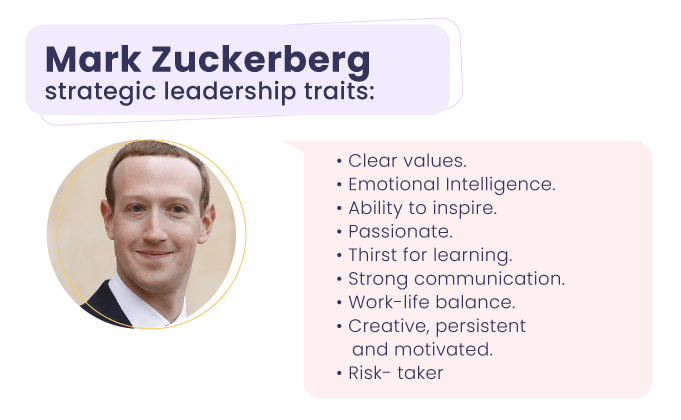
Final Take Away

The business world is changing at a rapid pace. Technology, globalization, and rising competition have reshaped the business environment.
It isn’t easy to function and succeed in such complex and dynamic environments. Organizations need experienced people with well-developed leadership abilities.
That's where the role of strategic leadership comes in.
Strategic leadership is of utmost importance to all organizations in such environments. Strategic leadership and strategic decision-making can lead to long-term organizational success.
CEOs, TMT’s, Board members, and other senior management take strategic decisions. Hence, the senior managers and the top management teams are vital strategic resources.
The decisions of the CEO and senior management impact the development. It also affects the implementation of strategies. The CEO and the senior management set the strategic direction of the organization. They utilize the organization’s core competencies.
Influential strategic leaders can make a competitive difference. The role of a strategic leader includes developing human capital.
Employees are the only sustainable resource of competitive advantage which requires investment. Hence, it is important for strategic leaders to ensure they are adequately trained.
Surveys essentially let you uncover the root problems before they become serious company concerns.
Hence, understanding the "pulse" of the organization is what a good employee survey should aim to accomplish. Vantage Pulse is designed to help organizations collect, measure, and track various engagement metrics.
Vantage Pulse will help you get intelligent actionable insights. Uncovering small and big issues of the company helps you in creating a fulfilling employee experience. Vantage Pulse promises to offer you the most cost-effective and efficient solution to measure engagement among employees.

















